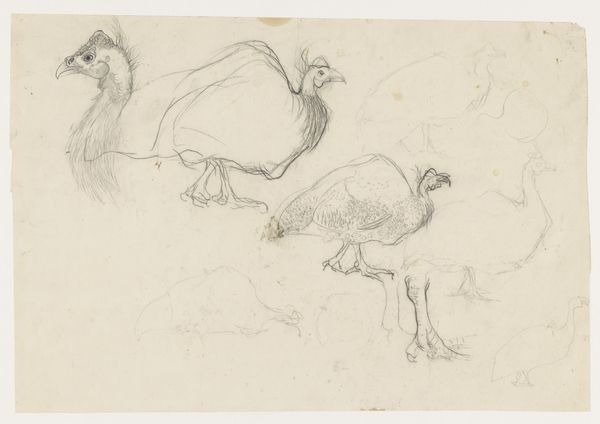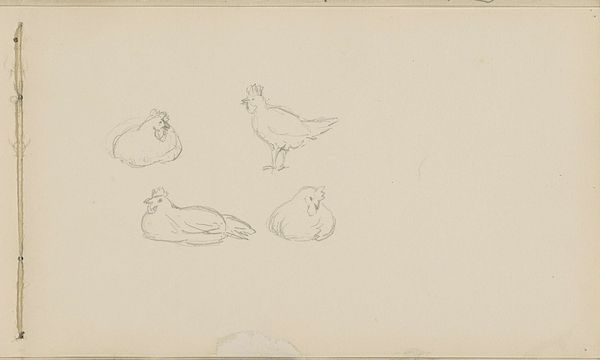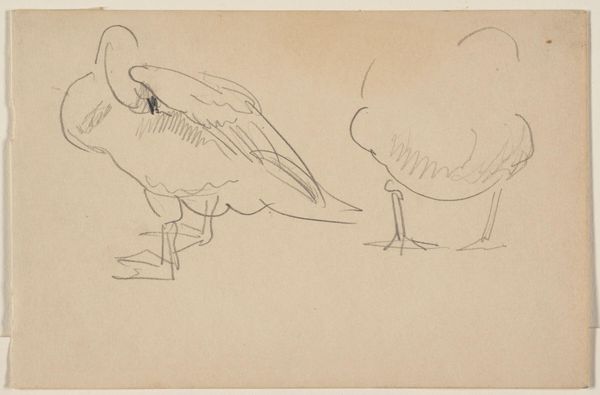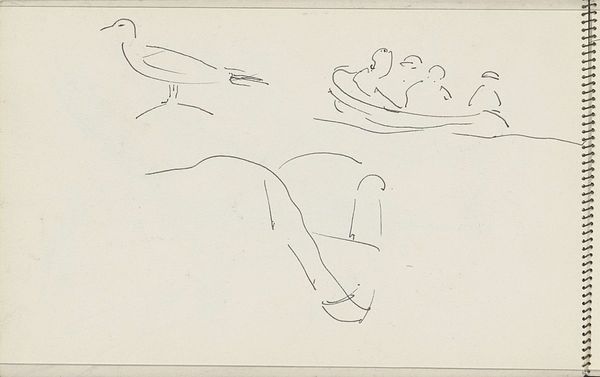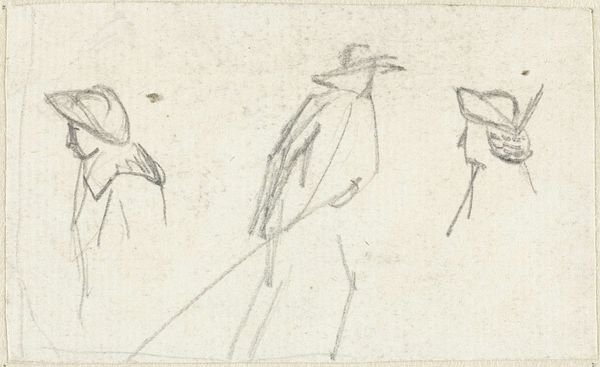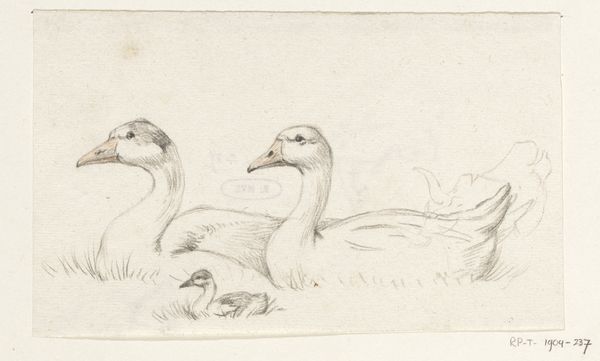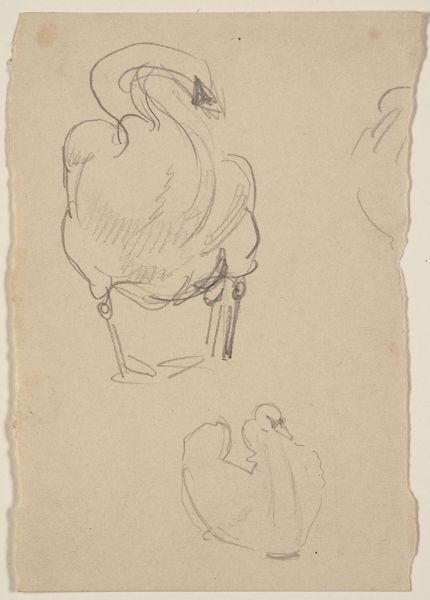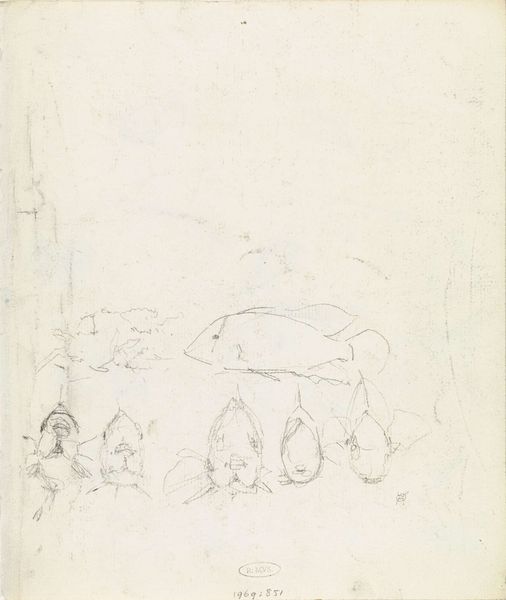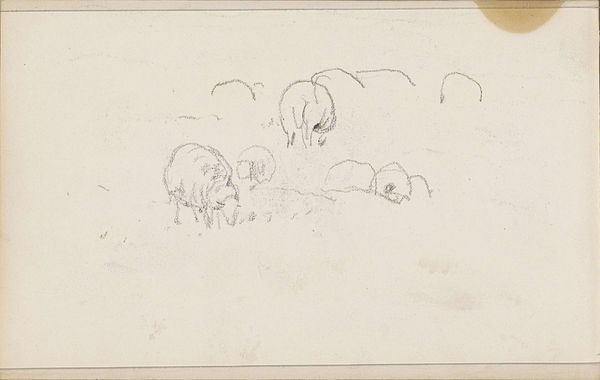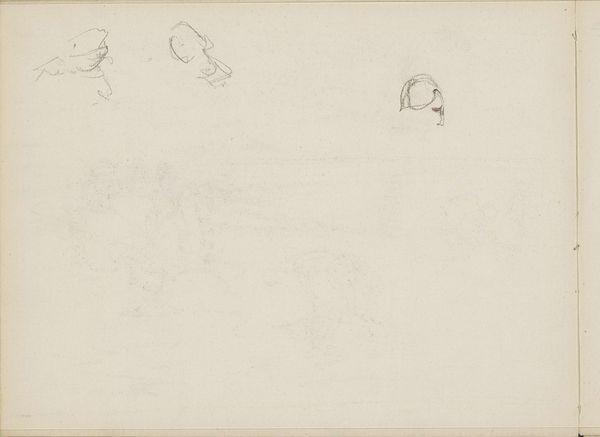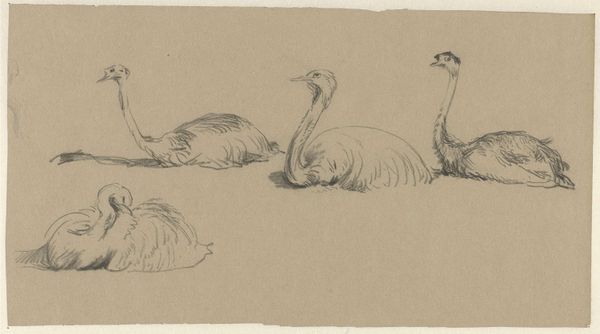
drawing, pencil
#
drawing
#
light pencil work
#
impressionism
#
landscape
#
personal sketchbook
#
pencil
#
sketchbook drawing
#
realism
Copyright: Rijks Museum: Open Domain
Curator: Here we have “Ducks and a Man's Head,” a pencil drawing by Anton Mauve, created sometime between 1848 and 1888. It’s currently part of the Rijksmuseum collection. What's your initial take on this sketch? Editor: It feels like a glimpse into the artist’s personal thoughts, a raw and unfiltered moment. The light pencil work lends it an almost ethereal quality, while the man's head adds a strange touch of humanity amid the natural scene of the ducks. Curator: It's fascinating how Mauve, often associated with pastoral scenes, includes this head seemingly as an afterthought. This inclusion pushes us to consider his artistic practice within a societal framework. Artists aren’t isolated. How did cultural expectations influence Mauve’s landscapes? How much did economic factors weigh in, especially since landscape art frequently resonated with specific groups in society? Editor: That’s interesting to consider. The very act of sketching, this freedom of the page, was itself possibly radical in its resistance to formal expectation. The rapid capture is more aligned with an impressionistic pursuit than the constraints of realism dominant during the 19th century. It shows us an insight on his creative process beyond the paintings destined for exhibition. Curator: Indeed, the drawing shows Mauve's creative flexibility! Sketchbooks and drawings can be powerful social documents when seen through the correct critical lenses. Whose experiences and perspectives are reflected, amplified, or erased within landscape imagery during that time, considering gender, class, and racial identities? Mauve's style had many followers in the Hague School. But to whom did this School truly speak? Editor: The presence of the human head, perhaps a self-portrait or study of someone, makes the landscape less idyllic, breaking its potentially picturesque quietude with the blunt, sketched, reality of human existence. In essence, by sketching what appears random, the artist actually created what's significant. Curator: Precisely. The juxtaposition of seemingly disparate elements makes you question conventional categories, genres, even. That's part of its lasting resonance. Editor: I find myself more invested in how that duck faces away—perhaps its story is worth imagining further. Curator: I agree; it certainly highlights the value of reevaluating artistic traditions.
Comments
No comments
Be the first to comment and join the conversation on the ultimate creative platform.
